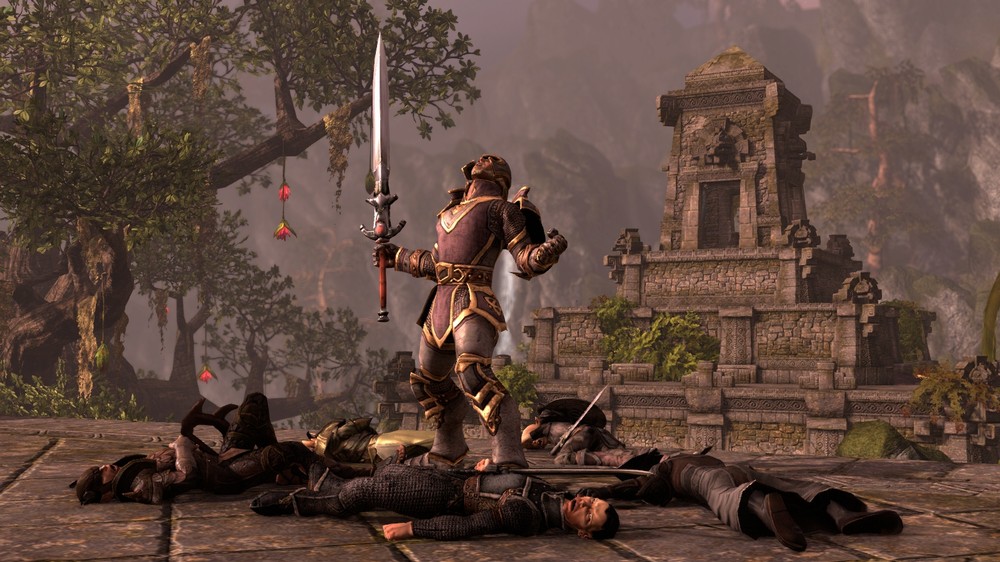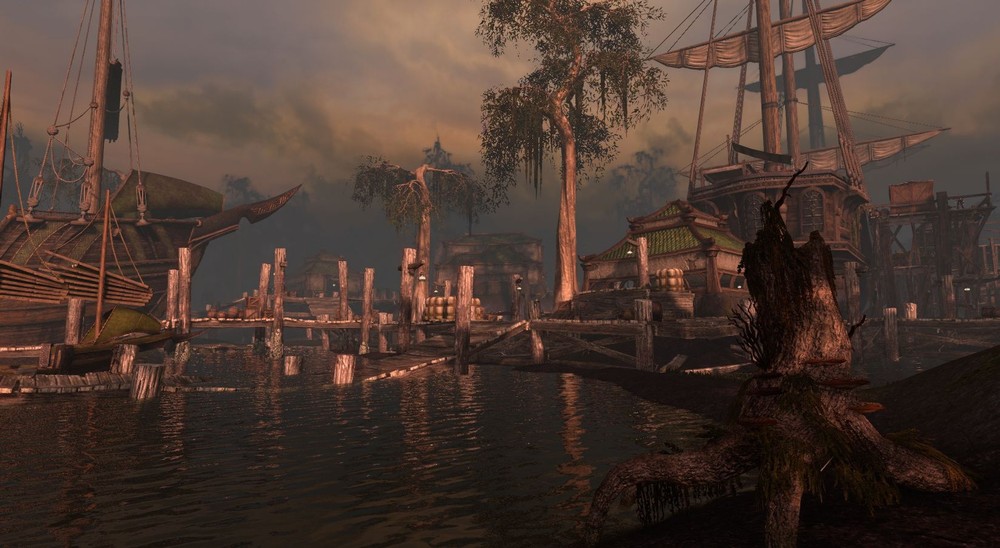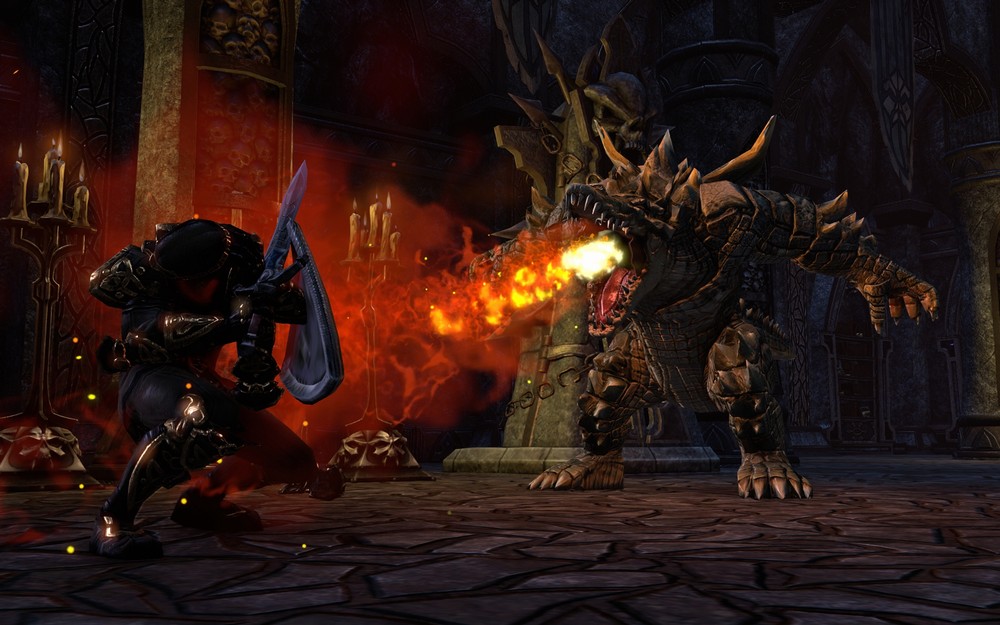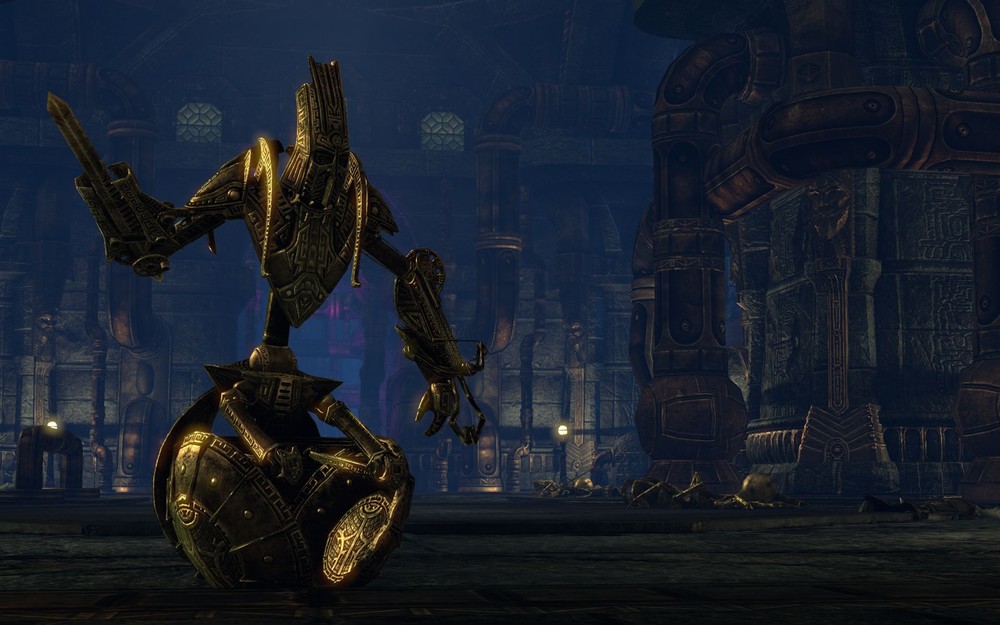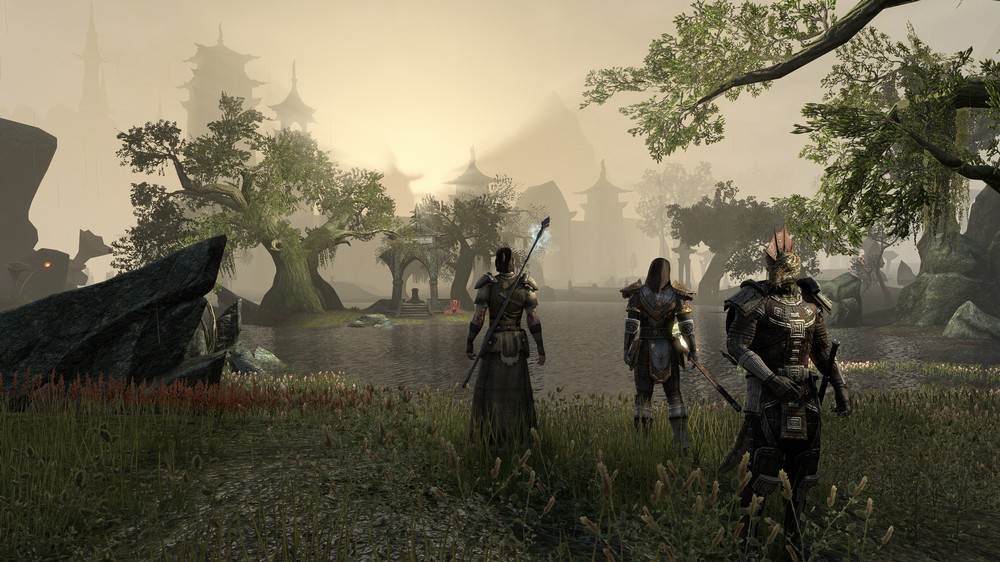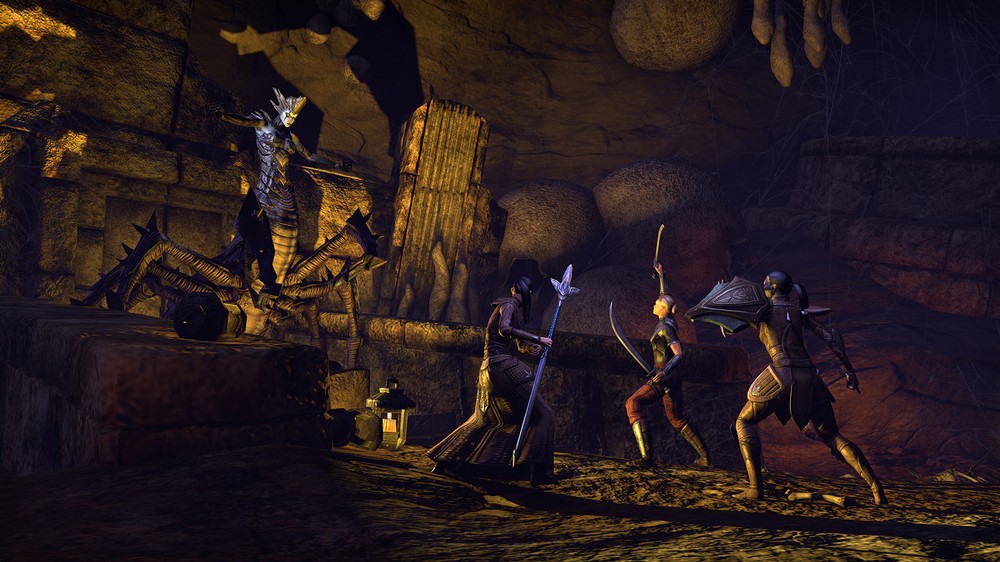Zenimax Online Studios tried to do the impossible when they committed to combining the freeform play-as-you-will nature of the Elder Scrolls games – a series that is, as much as anything, about taking solitary walks in the woods to pick mushrooms – with the player-packed get-money-forever formula of an MMORPG. It could have been a recipe for disaster, but it ended up being, instead, a recipe for a pretty okay game. In judging The Elder Scrolls Online, it seems pretty reasonable to break it up into the core components that the title suggests: How well does it succeed as an Elder Scrolls game, and how well does it succeed as an online RPG.
The core of Elder Scrolls, at least for me, is exploring beautiful environments, and Elder Scrolls Online does a decent job of the exploration part of that. On loading screens, the game encourages players to pick a direction and walk, and The Elder Scrolls Online definitely provides a world full of things to do and places to see. From dwemer ruins to smuggler’s caves, tomb complexes to temples, there are a huge number of points of interest to explore and quest in. You’ll eventually run into something that’s over your head, but as long as you stick to level-appropriate areas, wandering around looking for stuff to do is a pretty fun and viable way to play the game.
The beautiful part, they didn’t hit quite as well. I couldn’t put my finger on it, but something about the environments didn’t quite click with me. In Skyrim, you could walk practically anywhere, have a screenshot, and have a beautiful faux-Scandinavian landscape photo. The world seemed designed for majesty. In The Elder Scrolls Online, everything felt hollow and sparse, like I was walking through an incomplete world. Coupled with the fog to cover the game’s low draw distance, I just couldn’t get into the world that the game presented. The music was fine, though the voice acting was a bit hit and miss. I suppose it was worth it to finally realize that saltrice was pronounced salt-rice and not sal-treese.
Another cornerstone of the series is character customization, and The Elder Scrolls Online manages to do a good job of making whatever character you might want. There are four classes, which sort of translate to rogue, warrior, mage, and priest, and each has three unique skill trees. But outside of your class’s native trees, you’re able to select from a variety of skill trees based on the guilds you join, your race, the equipment you use, your crafting skills, and other qualifications. The game uses a limited action set to encourage players to focus on five active skills for each of their two weapon slots, but you can go deep on passive abilities and increase your power that way once you’ve found a set that works for you.
It’s entirely possible to make a dragon knight who uses a restoration staff for a tough healer, or a sorcerer who wield a sword and shield with heavy armor to have a wizard-knight who fights alongside summoned daedra. In a game that I was fairly lukewarm about, the class system is one of its greatest features and the thing that I’d most like to see built upon in future main-series Elder Scrolls games.
On the topic of how The Elder Scrolls Online fares as an online game, it’s a mixed bag. The game borrows from some of the best in the field, like Guild Wars 2’s scaling and a PVP system that draws on the fantastic systems of Dark Age of Camelot, but I never felt like it quite got all the way there.
The game’s combat owes more to modern action MMORPGs than to Elder Scrolls, with fights based around dodging AoEs, bashing spellcasters to create openings, and taking advantage. While I was initially annoyed, expecting something more like the single-player games, once it clicked I began to enjoy the feeling of putting an enemy off balance and opening him up for reprisal. The only issue that stuck with me was that I was never sure whether constant clicking for a series of light strikes or holding down the button for slower, more powerful strikes was optimal, leaving me worrying if the way I fought was unintentionally hurting my ability to survive combat.
The game’s gear crafting is excellent, a system where, by assembling materials, you can create any weapon or armor in the game, and upgrade its quality, as long as you know the right designs and weapon enhancements. Meanwhile, consumable crafting was something of an annoyance. I was constantly picking up provisioning items without having any real idea where to get recipes for food and drinks to use them in, aside from the occasional item drop. Meanwhile, alchemy, which feels right at home in traditional Elder Scrolls games where you’re free to go for walks in the woods to pick roots and berries, became slightly more stressful when you’re competing with other players to get to the resource node before they do.
In fact, along with the painfully small, unsearchable inventory – which led to me eventually just selling everything I didn’t have equipped because I would inevitably run out of space almost immediately after leaving town – the way other players can interfere with your experience was one of my biggest points of annoyance. Whether it was rushing in to pick the lock on a chest I was fighting near or gathering materials I needed to train my crafting, the fact that other players can, just by playing the game without any intent to grief, make my experience worse was remarkably obnoxious, especially in a game that already borrowed so much from Guild Wars 2, which solved this problem more than a year ago.
The game’s PVP, where players fight for control over Cydodiil, is one of the game’s better parts. It takes place in a vast zone, where each of the game’s three factions are vying for control of the Elder Scrolls and the Imperial City. Many of the more interesting battles are based around seige warfare, trying to take over your opponents’ holdings and protect your own fortresses and lines of reinforcement. I didn’t get too deep into it, being pretty strictly amateur at PVP, but it seems like something that a player who joins a devoted PVP guild could get into.
In fact, the guild system is one of the more interesting aspects of the game. Any player can join five guilds, meaning that guilds can become more specialized communities than they usually can. In fact, without a traditional auction house or trade post, joining a trade guild is the only reliable way to sell your goods. The idea of having multiple competing economic guilds on a server appeals to me, though it’s hard to tell whether the extra effort needed to participate in the economy will be justified by how cool the results might be.
Overall, The Elder Scrolls Online is a pretty decent game. It didn’t hook me, but there are already people racking up veteran ranks and exploring areas outside of their faction’s lands. To me, though, it seemed like a mix of good ideas and poor implementation, with a few bright points. It might improve with time, and I might check back in a year or two to see how it’s shaped up, but right now, I can’t recommend that anyone who’s on the fence buy it.



